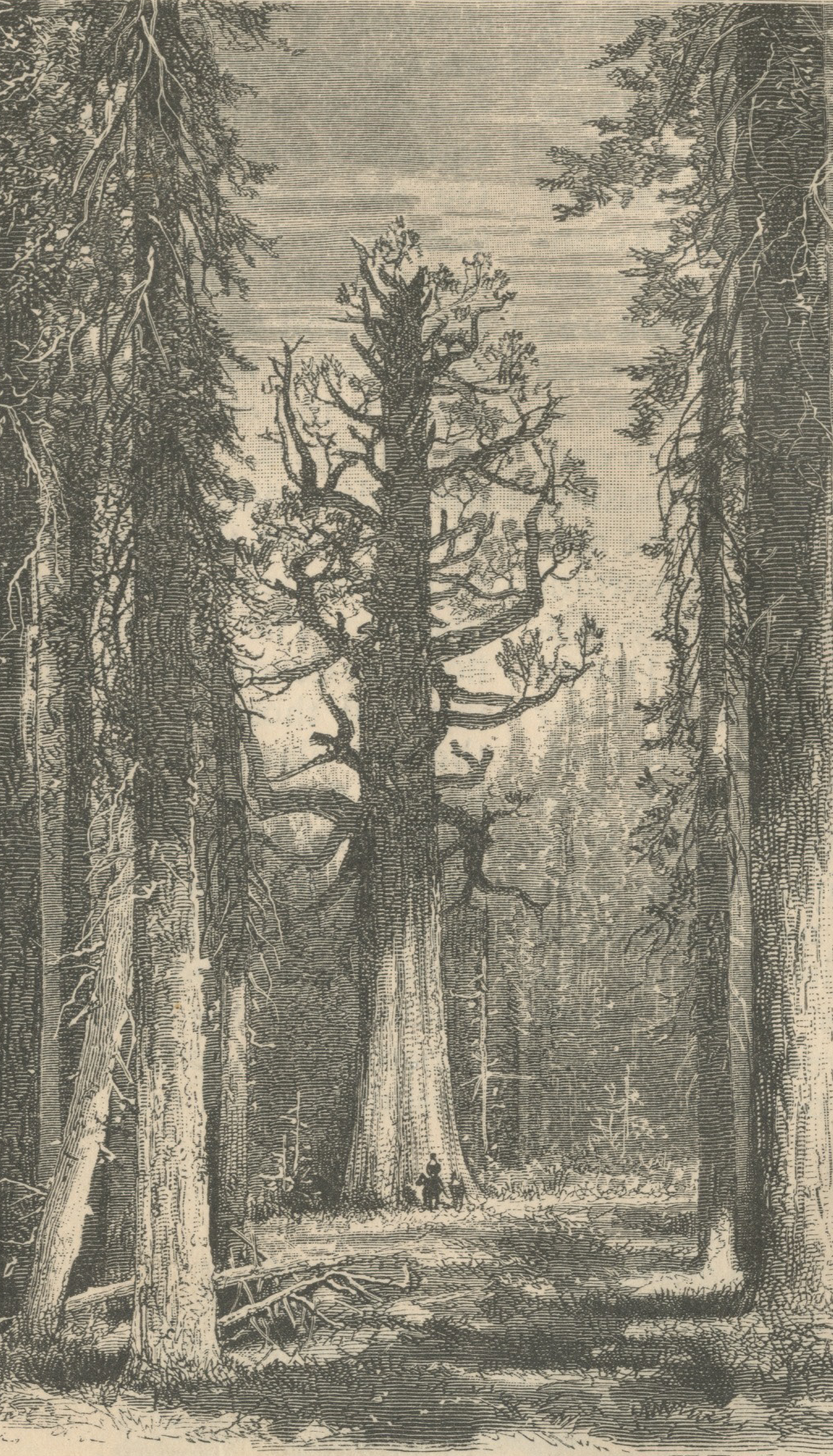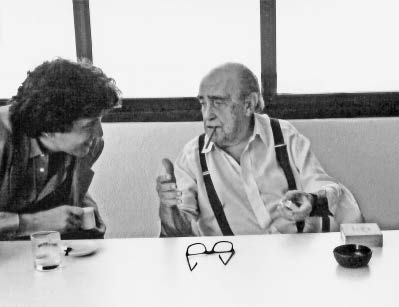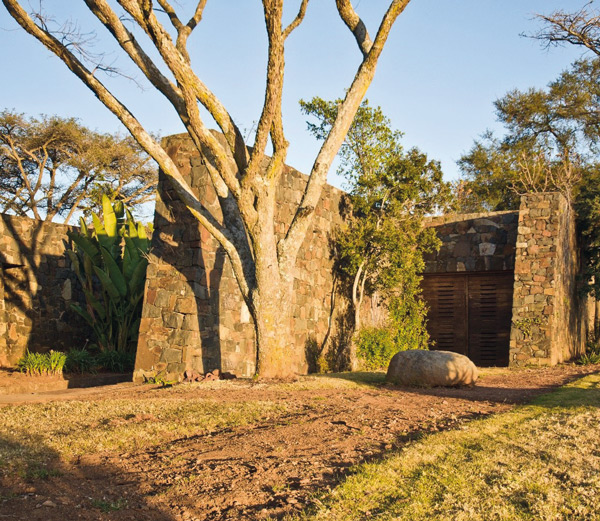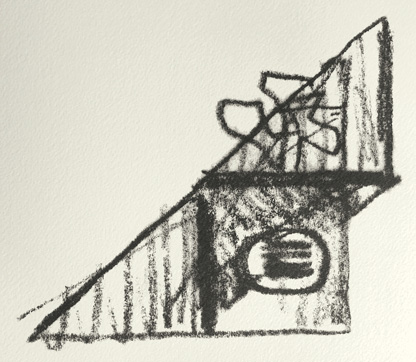- Know the collections

- Expand your research

- Discover the library

- Loan and request

- Write and cite

- Publish and deposit


Vernissage in occasione della mostra silvicultura. La foresta in biblioteca
martedì 3 dicembre 2024 ore 18:00
Saluti
L’evento sarà seguito da un aperitivo tematico a cura di
La foresta rappresenta, in senso stretto, l’opposto – cioè l’altro radicalmente diverso dalla sfera costruita – del suolo occupato da un edificio o da una intera città. Temuta e nel con-tempo ricercata per le sue qualità primordiali, la foresta è percepita ancora ai nostri giorni come un territorio eterotopico, un luogo di libertà e di resistenza, insomma, come un “anywhere out of the world” raggiungibile e riparatorio.
Il medium che abbiamo scelto per indagare le modalità di un dialogo con la foresta, nonché la possibilità di immedesimarsi nel suo regno così diverso dalla sfera edificata, è quello di una trattatistica che è riuscita ad associare elementi iconici e verbali. Dal Rinascimento in poi, libri e incisioni hanno affrontato oltre al problema della tutela e dell’utilizzo della foresta anche quello della sua rappresentazione, di per sé impossibile data l’estensione tri- se non quadrimensionale dell’oggetto.
Le pubblicazioni esposte nella mostra hanno contribuito a costituire, secolo dopo secolo, una coscienza della foresta in quanto fenomeno interdisciplinare. Saggi amministrativi, teorie commerciali e protoecologiche, prose poetiche, diari e manuali formano un intertesto che va studiato, innanzitutto alla luce dell’odierno e spesso semplicistico culto degli alberi e dei boschi, specialmente di quelli urbani.
In occasione della mostra è stato realizzato un catalogo illustrato con dettagliate descrizioni bibliologiche e bibliografiche.
Mostra e catalogo a cura di
Pagina evento
martedì 3 dicembre 2024 ore 18:00
Saluti
Christoph Frank e Angela Windholz
Il curatore dialogherà conGiorgio Vacchiano
L’evento sarà seguito da un aperitivo tematico a cura di
studio.planetaria
La foresta rappresenta, in senso stretto, l’opposto – cioè l’altro radicalmente diverso dalla sfera costruita – del suolo occupato da un edificio o da una intera città. Temuta e nel con-tempo ricercata per le sue qualità primordiali, la foresta è percepita ancora ai nostri giorni come un territorio eterotopico, un luogo di libertà e di resistenza, insomma, come un “anywhere out of the world” raggiungibile e riparatorio.
Il medium che abbiamo scelto per indagare le modalità di un dialogo con la foresta, nonché la possibilità di immedesimarsi nel suo regno così diverso dalla sfera edificata, è quello di una trattatistica che è riuscita ad associare elementi iconici e verbali. Dal Rinascimento in poi, libri e incisioni hanno affrontato oltre al problema della tutela e dell’utilizzo della foresta anche quello della sua rappresentazione, di per sé impossibile data l’estensione tri- se non quadrimensionale dell’oggetto.
Le pubblicazioni esposte nella mostra hanno contribuito a costituire, secolo dopo secolo, una coscienza della foresta in quanto fenomeno interdisciplinare. Saggi amministrativi, teorie commerciali e protoecologiche, prose poetiche, diari e manuali formano un intertesto che va studiato, innanzitutto alla luce dell’odierno e spesso semplicistico culto degli alberi e dei boschi, specialmente di quelli urbani.
In occasione della mostra è stato realizzato un catalogo illustrato con dettagliate descrizioni bibliologiche e bibliografiche.
Mostra e catalogo a cura di
Michael Jakob
GraficaIsabel Formica Jakob
Vetrina bibliograficaMichele Mogliazzi
Pagina evento
Vernissage della mostra silvicultura. La foresta in biblioteca
28 November 2024
11:34 am
.jpg)
ARTE = AZIONE
Materiali dall’Archivio della Galleria Flaviana
Nel 2021 la Biblioteca dell’Accademia di architettura ha ricevuto in dono la biblioteca e l’archivio della Galleria Flaviana di Locarno, fondata da Rinaldo e Ines Bianda, artisti e attivisti di numerosi progetti culturali e politici nel Ticino dei movimentati anni ’60-‘80.
Un lascito ancora più significativo perché completa la donazione fatta al MASI dell’archivio del VideoArt Festival, di un’estensione della galleria, garantendo la salvaguardia della memoria di un’iniziativa riformatrice condotta nello spirito futuristico del Monte Verità.
La mostra propone una selezione di documenti, attraverso i quali si vuole offrire uno sguardo ispiratore su un archivio di una galleria d’arte, come fonte originale per lo studio della storia dell’arte contemporanea. La documentazione contiene importanti informazioni sulle posizioni artistiche, sullo sviluppo di tendenze e sulla percezione di un’arte vissuta come provocazione nel Ticino dell’epoca.
Scambi epistolari con artisti e con gallerie europee, scritti di artisti e di critici, bozzetti di progetti, esperimenti artistici, quotazioni di opere e relazioni sulle reazioni del pubblico, si affiancano alla produzione di materiali promozionali, ai cataloghi, alle fotografie e alla rassegna stampa che raccontano pubblicamente l’attività espositiva.
Con innumerevoli iniziative sperimentali la Galleria Flaviana raccoglieva come in uno specchio concavo le più avanzate tendenze artistiche internazionali, mirando a “un percorso espositivo di ricerca e di scoperta con uno sguardo sempre rivolto al domani”.
Programma
Saluti del direttore dell'Accademia di architettura
Sabato 25 marzo 2023 ore 15.00
Visita guidata in occasione del Biblio Weekend
Materiali dall’Archivio della Galleria Flaviana
Nel 2021 la Biblioteca dell’Accademia di architettura ha ricevuto in dono la biblioteca e l’archivio della Galleria Flaviana di Locarno, fondata da Rinaldo e Ines Bianda, artisti e attivisti di numerosi progetti culturali e politici nel Ticino dei movimentati anni ’60-‘80.
Un lascito ancora più significativo perché completa la donazione fatta al MASI dell’archivio del VideoArt Festival, di un’estensione della galleria, garantendo la salvaguardia della memoria di un’iniziativa riformatrice condotta nello spirito futuristico del Monte Verità.
La mostra propone una selezione di documenti, attraverso i quali si vuole offrire uno sguardo ispiratore su un archivio di una galleria d’arte, come fonte originale per lo studio della storia dell’arte contemporanea. La documentazione contiene importanti informazioni sulle posizioni artistiche, sullo sviluppo di tendenze e sulla percezione di un’arte vissuta come provocazione nel Ticino dell’epoca.
Scambi epistolari con artisti e con gallerie europee, scritti di artisti e di critici, bozzetti di progetti, esperimenti artistici, quotazioni di opere e relazioni sulle reazioni del pubblico, si affiancano alla produzione di materiali promozionali, ai cataloghi, alle fotografie e alla rassegna stampa che raccontano pubblicamente l’attività espositiva.
Con innumerevoli iniziative sperimentali la Galleria Flaviana raccoglieva come in uno specchio concavo le più avanzate tendenze artistiche internazionali, mirando a “un percorso espositivo di ricerca e di scoperta con uno sguardo sempre rivolto al domani”.
Programma
Saluti del direttore dell'Accademia di architettura
Walter Angonese
Opening speechDalmazio Ambrosioni
Saranno presenti ancheLorenzo Bianda, Francesco Mariotti
Sabato 25 marzo 2023 ore 15.00
Visita guidata in occasione del Biblio Weekend
ARTE = AZIONE
Materiali dall’Archivio della Galleria Flaviana
7 March 2023
7:00 pm

Presentation of the book
Cigarrilhas. Dois meses no escritório de Oscar Niemeyer
di Martino Pedrozzi
Romano Guerra Editora, San Paolo, Brasile, 2022
Il libro è l’edizione brasiliana tradotta in portoghese da Angelo Bucci di "Mini Cigarillos. Due mesi nello studio di Oscar Niemeyer", LetteraVentidue, Siracusa, 2020.
Nel 1999 Martino Pedrozzi, giovane architetto svizzero da poco laureato, vive il sogno di lavorare nello studio di Oscar Niemeyer a Copacabana. Con Cigarrilhas ci restituisce, attraverso 26 brevissime prose, un ritratto inedito e intimo del grande architetto brasiliano
Programma
Benvenuto e introduzione
Cigarrilhas. Dois meses no escritório de Oscar Niemeyer
di Martino Pedrozzi
Romano Guerra Editora, San Paolo, Brasile, 2022
Il libro è l’edizione brasiliana tradotta in portoghese da Angelo Bucci di "Mini Cigarillos. Due mesi nello studio di Oscar Niemeyer", LetteraVentidue, Siracusa, 2020.
Nel 1999 Martino Pedrozzi, giovane architetto svizzero da poco laureato, vive il sogno di lavorare nello studio di Oscar Niemeyer a Copacabana. Con Cigarrilhas ci restituisce, attraverso 26 brevissime prose, un ritratto inedito e intimo del grande architetto brasiliano
Programma
Benvenuto e introduzione
Angela Windholz
Presentazione del libroMatteo Terzaghi in dialogo con l’autore
Book presentation
Cigarrilhas. Dois meses no escritório de Oscar Niemeyer
by Martino Pedrozzi
18 October 2022
6:30 pm

Presentation of the book
Ceating Coromandel. Marco Zanuso in South Africa
by Edna Peres and Andrea Zamboni
Artifice Press, 2022
Creating Coromandel explores the decade-long partnership between Milanese architect and designer Marco Zanuso (1916–2001) and the South African fashion retailers Sydney Arnold Press (1919–1997) and Victoria de Luria Press (1927–2015), whose shared passion for design spurred them to create the enigmatic home Coromandel in the southern tip of Africa. It continues to inspire a growing number of architects interested in building within a natural context.
The farmhouse, which sits in a spectacular valley in Lydenburg, 275km north-east of Pretoria, was built in 1975 and has since developed a cult following for its unusual aesthetic – part building, part ruin, part wilderness. Coromandel House was initiated in 1969, and yielded a decade-long partnership resulting in Coromandel House and also Edgardale (1978), the Press family’s business headquarters. Creating Coromandel is more than an in-depth monograph, offering an alternative syntheses of the bigger context in which weights and hierarchies are redistributed more convincingly. The authors discuss the main themes in the book mainly the design of the house which today are lauded as environmental or sustainable design, as well as the association between the clients, the architect and prominent personalities, including Brazilian landscape architect Roberto Burle Marx (1909–1994) and Italian landscape architect Pietro Porcinai (1910–1986).
Creating Coromandel documents Zanuso’s extraordinary skill, but also offers a glimpse into the design process and amount of collaboration it involves. Fans of Zanuso, architects, designers, historians, photographers and anyone interested in design and architecture are invited to attend this presentation of an inspirational story behind the process of building a legacy.
Programma
Welcome
Panel discussion
Ceating Coromandel. Marco Zanuso in South Africa
by Edna Peres and Andrea Zamboni
Artifice Press, 2022
Creating Coromandel explores the decade-long partnership between Milanese architect and designer Marco Zanuso (1916–2001) and the South African fashion retailers Sydney Arnold Press (1919–1997) and Victoria de Luria Press (1927–2015), whose shared passion for design spurred them to create the enigmatic home Coromandel in the southern tip of Africa. It continues to inspire a growing number of architects interested in building within a natural context.
The farmhouse, which sits in a spectacular valley in Lydenburg, 275km north-east of Pretoria, was built in 1975 and has since developed a cult following for its unusual aesthetic – part building, part ruin, part wilderness. Coromandel House was initiated in 1969, and yielded a decade-long partnership resulting in Coromandel House and also Edgardale (1978), the Press family’s business headquarters. Creating Coromandel is more than an in-depth monograph, offering an alternative syntheses of the bigger context in which weights and hierarchies are redistributed more convincingly. The authors discuss the main themes in the book mainly the design of the house which today are lauded as environmental or sustainable design, as well as the association between the clients, the architect and prominent personalities, including Brazilian landscape architect Roberto Burle Marx (1909–1994) and Italian landscape architect Pietro Porcinai (1910–1986).
Creating Coromandel documents Zanuso’s extraordinary skill, but also offers a glimpse into the design process and amount of collaboration it involves. Fans of Zanuso, architects, designers, historians, photographers and anyone interested in design and architecture are invited to attend this presentation of an inspirational story behind the process of building a legacy.
Programma
Welcome
Christoph Frank
IntroductionChristian Sumi
Presentation of the bookEdna Peres, Andrea Zamboni
Panel discussion
Nicola Navone, Christian Sumi
ConclusionChristian Sumi
Book presentation
Ceating Coromandel. Marco Zanuso in South Africa
by Edna Peres and Andrea Zamboni
29 September 2022
6:30 pm
- Documents

Presentation of the anastatic re-edition of the book
Carlo Scarpa Architetto Poeta
by Sergio Los
Editrice Artistica Bassano 2021
Sergio Los proposes for discussion this book/lecture Carlo Scarpa Architetto Poeta, republished after its first publication in 1967. It was then the first book on Carlo Scarpa's architecture and described an interpretation of both the works and the compositional practices, aimed at enabling the students of his first course to apply them in their exercises. In 1983 Los was commissioned by the Rector of the University to carry out the project which Scarpa had outlined in the book, and he then drew up a project to make it executable, an architectural score to be used in future maintenance and restoration projects. This project/score, which also documents the construction of the building, was published in a second book, Verum Ipsum Factum of 1985. When Los began his studies at the IUAV University, he considered architecture to be an artistic activity, and was therefore interested in its cognitive faculty, in its ability to produce meaning. The book we present was composed to overcome the dissociation of design practice into aesthetics and techno-science, showing how Scarpa, thinking in figures through drawing, elaborated solutions using architecture to pursue an understanding of problematic situations that did not exist before, rather than copying pre-existing figures or hoping that figures would emerge at the end of analytical research. Fundamental to understanding how these practices of Scarpa's operate is the study of Konrad Fiedler, who considers art a visual language and the compositions of architecture a figurative thinking with the hands of craft and artistic work (as Gottfried Semper had done) - and distinguishes art as knowledge from aesthetics as embellishment. Far from aesthetic subjectivism, Los's architecture returns to referentiality, which becomes a way of applying that figurative, typological thinking to research on design methods and processes, as well as to the multi-scale experiences of bioclimatic architecture, which led him to the regionalism of civic architecture, to which he mainly dedicated his subsequent compositional research.
Programme
Greeting from the director
Interventions
Conclusions
Carlo Scarpa Architetto Poeta
by Sergio Los
Editrice Artistica Bassano 2021
Sergio Los proposes for discussion this book/lecture Carlo Scarpa Architetto Poeta, republished after its first publication in 1967. It was then the first book on Carlo Scarpa's architecture and described an interpretation of both the works and the compositional practices, aimed at enabling the students of his first course to apply them in their exercises. In 1983 Los was commissioned by the Rector of the University to carry out the project which Scarpa had outlined in the book, and he then drew up a project to make it executable, an architectural score to be used in future maintenance and restoration projects. This project/score, which also documents the construction of the building, was published in a second book, Verum Ipsum Factum of 1985. When Los began his studies at the IUAV University, he considered architecture to be an artistic activity, and was therefore interested in its cognitive faculty, in its ability to produce meaning. The book we present was composed to overcome the dissociation of design practice into aesthetics and techno-science, showing how Scarpa, thinking in figures through drawing, elaborated solutions using architecture to pursue an understanding of problematic situations that did not exist before, rather than copying pre-existing figures or hoping that figures would emerge at the end of analytical research. Fundamental to understanding how these practices of Scarpa's operate is the study of Konrad Fiedler, who considers art a visual language and the compositions of architecture a figurative thinking with the hands of craft and artistic work (as Gottfried Semper had done) - and distinguishes art as knowledge from aesthetics as embellishment. Far from aesthetic subjectivism, Los's architecture returns to referentiality, which becomes a way of applying that figurative, typological thinking to research on design methods and processes, as well as to the multi-scale experiences of bioclimatic architecture, which led him to the regionalism of civic architecture, to which he mainly dedicated his subsequent compositional research.
Programme
Greeting from the director
Walter Angonese
IntroductionFranz Graf
Book presentationSergio Los
Interventions
Mario Botta
Open discussion
with the audience
Conclusions
Franz Graf
Book launch
Carlo Scarpa Architetto Poeta
by Sergio Los
2 March 2022
6:00 pm
- Documents
- In preparation
- Archive
- Vernissage della mostra silvicultura. La foresta in biblioteca
- ARTE = AZIONE
Materiali dall’Archivio della Galleria Flaviana - Presentazione del libro
Cigarrilhas. Dois meses no escritório de Oscar Niemeyer
di Martino Pedrozzi - Presentazione del libro
Ceating Coromandel. Marco Zanuso in South Africa
by Edna Peres and Andrea Zamboni - Presentazione del libro
Carlo Scarpa Architetto Poeta
di Sergio Los
- Vernissage della mostra silvicultura. La foresta in biblioteca
- Background image
-
-